- Home
- Robin Cook
Death Benefit Page 6
Death Benefit Read online
Page 6
First they entered an anteroom where there were caps, gowns, booties, masks, and gloves. There was a similar room on the other side of the lab that guarded entrance into the biosafety unit, just as this room guarded the organ bath unit. Interestingly enough, the rationale was just the opposite. For the biosafety unit the gear was for protection of the visitors. With the organ bath unit it was called reverse precautions and was for protection of the contained specimens. It wasn’t until everyone was suited up and had been checked by Yamamoto that they proceeded.
5.
COLUMBIA UNIVERSITY MEDICAL CENTER
NEW YORK CITY
MARCH 1, 2011, 2:00 P.M.
Using a keypad, Dr. Yamamoto punched in a combination, unlocking a simple door. Although she wasn’t trying, Pia noticed it was the same code used for the biosafety unit, an alphanumeric sequence that was the time and date of Rothman’s birth. Yamamoto stepped aside and ushered the three students into a starkly modern, brightly lit room filled with the gentle, hypnotic sound of running water. Pia felt a slight breeze against her as she advanced. She knew that was evidence of the room having positive pressure, meaning air came out of the room, not in. That was the opposite of the biosafety room, where the laminar flow was into the room.
Stepping beyond the door, Pia shaded her eyes against the sharp bluish light that came from banks of recessed fiber-optic fixtures. She assumed the light had something to do with sterility in the room. Stopping with the others, she took in the scene before her. They had entered a large space painted bright white. Pia was puzzled as to how this lab fit in with the rest of Rothman’s suite—it seemed larger than it feasibly could be. At the back of the room, a figure dressed in similar protective garb was hunched over a stainless-steel cart mounted on wheels, making some adjustments on a control panel. There were three rows of such carts and Pia counted thirty of them in all. Set atop each were clear rectangular Plexiglas aquarium-like containers of various sizes. Below were shelves holding various and sundry equipment. Each also had an attached pole supporting a control panel with an LED display. One of the carts was a few feet to Pia’s left and she moved over to take a closer look. Lesley and Will followed.
This was one of the organ-growing baths whose contained fluid was what Pia would be investigating for the month. She leaned over and peered into the container at a miniature translucent object suspended in the liquid by a kind of spiderweb that she was later to find out was made of the same material as real spiderwebs. As for the object itself, she could see it was connected by filament-thin lines to a central clamp where the lines were gathered. A thicker cable fed out of the bath and down into the body of the cart, where there was a boxy device with multiple readouts monitoring the conditions in the bath. An attached magnifying device on a movable arm was also connected to the cart. Pia maneuvered it into position so she could see the contained object better. Although it was not too much larger than a pine nut, its appearance was unmistakably that of a kidney, albeit a very tiny kidney. Most of the lines contained red fluid along one larger one that was clear. The red ones were presumably functioning as veins and arteries. The clear one was acting as the ureter to take away the urine the miniature organ was producing. To one side of the container was a jet, like one attached to a pool circulator, only in miniature. It was pulsating at a very rapid rate. Gentle eddies of liquid coursed around the container, causing the organ’s surface to pulsate slightly.
“We find that we must keep the fluid in the baths in constant motion despite the organs being perfused internally. But it has to be carefully modulated. Occasionally the rigid bath sets up a wash that can disturb the organ.” Yamamoto had stepped over to join the students. He noticed Pia straighten, looking down the length of the room.
“It’s quite something, isn’t it?” he said, speaking directly to her. “Of course, I see it every day, so I’ve come to take it all for granted.”
“How are the organs started?” Pia asked.
“They are started in tissue culture dishes designed to mimic the mouse uterine environment in terms of temperature and with pulsation waves close to the normal mouse heart rate of around five hundred and fifty beats a minute. As I said earlier, the whole process, first in the tissue culture dishes and then in these organ baths, is a ballet of gene expression with a careful adherence to sequence and timing. It starts with an aliquot of induced pluripotent stem cells held in close proximity by spiderweb-like restraints. Remember, to form a whole organ we have to involve all three germ layers: ectoderm, mesoderm, and endoderm. Once the organ has reached a size that can be manipulated, it is moved into these baths to develop to its full extent.”
“Are there other organs in here besides kidneys?” Will asked.
“Heavens yes,” Yamamoto said. “We’ve got all the usual transplantable organs such as livers, pancreases, lungs, and hearts so far. The kidney program is the most advanced, since it was kidneys we started with. To prove we are on track with what we have been doing, we have already transplanted some organs back into the individual mice from which the fibroblasts were taken with complete and utter success. And let me share another leap forward that we are in the process of making. We’ve found that carrying out organogenesis with multiple organs works even better than growing them singularly, meaning we have preparations in which the developing organs are helping each other, like the heart pumping the perfusing fluid and the kidneys removing waste.”
“Do you think sometime in the future you could essentially make a whole new organism?” Pia asked with astonishment and not a little dismay.
“At the rate we’re going, I see that as a definite possibility, although I can’t imagine what the rationale would be.”
Pia reflexively shuddered as she realized that Frankenstein, that nineteenth-century nightmare, could very well resurrect itself to haunt the twenty-first in a frighteningly more plausible fashion. If the Rothman-Yamamoto organogenesis worked well with kidneys, hearts, and pancreases, there was no reason it couldn’t work just as well with brains.
“Where are the human organs?” Pia asked.
Yamamoto took a few steps down the kidney line and pointed into a larger Plexiglas container. “This is human, as you might expect considering the size. It’s also one of the composite preparations with a human heart to do the kidney’s internal profusion.”
Pia stared into the bath, transfixed by what she was looking at. The kidney did look human, but the heart did not. She asked Yamamoto why.
“Good question. Since oxygenation of the perfusing fluid is being done by the oxygenator on the lower shelf, we did not need a four-chambered heart as two would do. So we altered the design of the heart.”
Once again Pia was amazed. “You have that much control of the organogenesis process to alter the overall three-dimensional architecture?”
“Absolutely. As I mentioned, once we made the original organogenesis breakthroughs, our progress has been truly phenomenal and isn’t slowing down.”
The figure Pia had seen earlier finished what he was doing, stood upright, and came toward the group. As he neared, and despite the surgical mask, Pia was further surprised. She could tell it was Rothman. Wearing some kind of goggles with thick, tinted lenses, he made for an eerie figure, like the prototypical mad scientist in his lair. Pia knew that what Dr. Yamamoto had said outside was true—this truly was groundbreaking work. In the stem cell race to move from the promising hypothetical to the clinical, Rothman and Yamamoto had advanced much further than any other team in the world.
Rothman moved the goggles to the top of his head as he came to a stop. He looked at Yamamoto. “Have they been given a short introduction?”
“Yes, Doctor.”
Rothman nodded. He knew he was going to have to show off his work to any number of interested biotech venture capitalists over the coming years, even though it wasn’t something he enjoyed or found easy. Yamamoto had helped him prepare a script that he’d practiced again and again with his wife. The students were to be
a kind of dress rehearsal.
“Welcome to Columbia University Organogenesis Laboratory,” Rothman said. Yamamoto coughed gently into his hand. Rothman had trouble deviating even slightly from the prepared text.
“It is common knowledge that there are currently more than one hundred thousand people on waiting lists for organ transplants in this country, and these are people with end-stage disease. The list grows at a rate of about five hundred a month. Currently the same number of people, five hundred or so, die every month. On top of this grim statistic there are thousands upon thousands of additional patients who could benefit from an organ transplant even though they are not yet in a life-threatening situation. Obviously in the current environment the supply of viable organs from either a live donor or a recently deceased individual has not come close to keeping up with demand. Even for those patients lucky enough to receive an organ, the match is often far from optimal, meaning they are relegated to a life of immunosuppression with dire health consequences. What we are doing here, in a cost-conscious fashion, is to create organs which will simultaneously solve the supply problem and the immunological issue. This goal has not yet been reached, but we are making significant progress. At this stage we are looking for outside funding to ramp up production at multiple centers across the country.
“What you see in this row of baths are kidneys that have been created from stem cells derived from fibroblasts—connective tissue cells—of specific mice.” Yamamoto tried to interrupt to say that Rothman was covering material that had already been mentioned, but he couldn’t get Rothman’s attention. Rothman was on a roll. “I wear these magnifying lenses so I can work with the lines, but take my word for it, each organ is hooked up to a pump that circulates a blood-like solution into the kidney’s main artery and out its main vein. It’s connected by a cannula, or thin tube, from its ureter to a port where its urine output can be sampled. That’s one of the functions performed by the monitoring unit beneath the bath. All the data is collected in the mainframe so we can see how tiny fluctuations in conditions affect the kidney and its development.
“Each kidney will soon be implanted back into the same mouse that supplied the original fibroblasts. We’ve already done this twice with no rejection phenomena whatsoever.” With his hand, Rothman gestured toward another group of baths. “These vessels contain pancreases, which have quite different needs than kidneys. Initially we had more difficulty getting the organogenesis process to start than we had with the kidneys, but those initial reverses have been solved, and we are now doing equally well. With the pancreases, we have had to be very careful about the integrity of the connections with the pancreatic duct since the pancreatic secretions contain digestive enzymes. Initially some of our preparations digested themselves.”
“Have there been any problems with teratomas?” Pia asked. In contrast to the others, she did not feel intimidated by Rothman. She knew that teratomas, a kind of developmental tumor, were something feared by stem cell biologists.
For a moment Rothman faltered. He had not been expecting to be interrupted in his prepared remarks. Except for the sound of moving fluid emanating from all the organ baths, a brief silence reigned.
“No teratomas at all,” Yamamoto said, coming to his boss’s aid. He was well aware of his boss’s quirky personality.
As if he had forgotten the students’ and Yamamoto’s presence, Rothman’s attention diverted to the appearance of a small blinking light accompanied by a pinging noise coming from the control panel of one of the baths. Without a second’s thought or explanation, Rothman headed in its direction, slipping his goggles back on as he walked.
“That’s an alarm that some aspect of the bath’s parameters has started to change,” Yamamoto explained.
The students watched him go. Lesley and Will were awed at having been in the famous researcher’s presence and having survived without being belittled. Pia was impressed by the alarm: “What would have happened if no one had been in here to hear the alarm?”
“Not a problem,” Yamamoto said. “All information is followed in real time by the university’s mainframe, and Dr. Rothman and I have apps on our iPhones such that we would have been instantly alerted.”
“Earlier Dr. Rothman talked to me about a problem with the tissue culture fluid,” Pia said. “Was he referring to the fluid in these baths?”
“I’m sure he was,” Yamamoto said. “We’ve been having a continuing problem maintaining the correct pH balance. Did he ask you to look into the problem? Because if he did, it would be a great help. It’s not been a particularly big problem, but neither of us has had a chance to look into it. I know I’d feel a lot better if we could solve the issue.”
“I’ll give it my best,” Pia said. “The problem is I’m starting at ground zero. I’ve had no experience whatsoever with tissue culture.”
“That didn’t seem to bother you in relation to salmonella,” Yamamoto said.
Pia smiled behind her mask. She took Yamamoto’s comment as a compliment. “What about Lesley and Will? Maybe it would be appropriate for them to give me a hand.”
“That’s a great idea,” Yamamoto said. He looked at Lesley and Will. “How does that sound to you?”
Both students shrugged. “Sounds good,” they said in unison.
As they left the organ bath unit, Pia turned just before exiting. She looked back at Rothman tending to the bath. The pinging had stopped. Once again the thought of the mad scientist in his lair popped into her mind, and once again she shuddered. She’d visited the future in this room and was excited to become a part of it. At the same time she knew instinctively that there could be a dark side. Biological science was advancing almost too fast, and the problem with science is that it cannot be unlearned.
6.
GREENWICH, CONNECTICUT
MARCH 1, 2011, 3:30 P.M.
Edmund Mathews went to answer the front door of his waterfront mansion in an extra-exclusive enclave of the already-exclusive Connecticut town of Greenwich. It was unusual that he was alone in the house, but his wife, Alice, had gone to the city with a girlfriend on a shopping expedition, and the au pair, Ellen, wasn’t back from school with Darius yet. There was no gardener on the grounds, no workman in the house, nor were there any painters, decorators, deliverymen, mechanics, cooks, or anyone else anywhere on the property. The $10 million house was quiet and unattended, just the way Edmund liked it.
This will be Russell, Edmund thought. Edmund and his partner, Russell Lefevre, had decided to take this Tuesday off because their work was about to get crazy. This was going to be the last free day they would have in months, and it seemed like now he was losing some of his free afternoon. Russell had called a few minutes earlier, sounding upset, and said he wanted to come over immediately to talk about something important. Russell had a habit of insisting on talking about anything sensitive in person. Back at Morgan Stanley, when they worked together in asset-backed securities, their calls had been recorded in case either party misremembered the terms of a trade later on. Edmund doubted very much that anyone was listening in nowadays but the old habit lingered with Russell. He was a worrier and he always had been.
Edmund opened the door and greeted Russell. His partner was a tall, lithe man with a sweep of blond hair tinged with gray. He was wearing tennis whites with a sweater thrown over his shoulders. For a man who was usually quite a dandy, he looked thoroughly bedraggled. When he wasn’t in a suit, Edmund preferred to wear old T-shirts and shorts, even in winter. He was thicker in the body than Russell, but not overweight, and he kept his hair short and neat with weekly trips to the barber in town.
Edmund could see that Russell had haphazardly parked his Aston Martin DB9 in the driveway and not over by any of the garages as Edmund preferred. The Aston Martin was a fine piece of automotive engineering but it was too ostentatious a machine for everyday use for Edmund’s taste. The garish crimson paint job only exacerbated the feeling. Edmund preferred the in-your-face statement he made in his black
Escalade, but for driving enjoyment, he loved nothing better than taking his Morgan runabout on the back roads deep into Connecticut. His true pride and joy he drove only rarely: in his garage was a Ferrari 250 GTO that had cost him millions back in the days when that didn’t seem like such an extravagance.
“We’ve got a problem,” Russell said as he entered the atrium.
“So I gather. Let’s go into the kitchen,” said Edmund, who preferred to keep business discussions out of the house if he could help it. This was going to be one of those days he didn’t have any choice.
Russell and Edmund had both worked as derivative traders at Morgan Stanley. Edmund was one of the best traders there, agile and decisive and brilliantly able to find someone to take the other side of a position he was holding. He knew Russell had some limitations as a trader, but he had a quant’s mind that could calculate risk quickly, and Edmund could rely on him to tell him if something he was planning was feasible. Russell had seen the potential for making money in CDOs—collateralized debt obligations—exotic financial products that took advantage of the subprime mortgage market to create apparently risk-free investments that could make billions in profits for the company and tens of millions for the traders. With property prices on their seemingly unstoppable upward curve, the investments were safe as houses, as people in the know liked to say.
Eventually it turned out that many of the executives at the brokerages selling CDOs and at the financial institutions here and in Germany and Japan and elsewhere who bought them were completely ignorant of what a CDO actually was. They knew what asset-backed securities were, but the assets here were mortgage bonds packaged together and sliced up and sold in bundles. Many of the individual loans the bonds were backed by were subprime loans that would never be paid off, and only a few loans needed to fail before the whole package defaulted. It was inevitable that this would happen.

 Shock
Shock Mutation
Mutation Chromosome 6
Chromosome 6 Brain
Brain Intervention
Intervention Invasion
Invasion The Legend of Parzival: The Epic Story of His Quest for the Grail
The Legend of Parzival: The Epic Story of His Quest for the Grail Acceptable Risk
Acceptable Risk Cell
Cell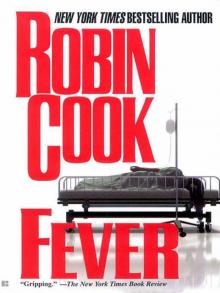 Fever
Fever Death Benefit
Death Benefit Contagion
Contagion Mindbend
Mindbend Coma
Coma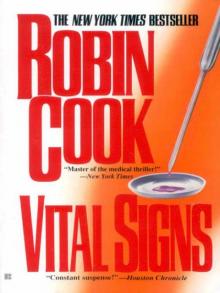 Vital Signs
Vital Signs Harmful Intent
Harmful Intent Critical
Critical Foreign Body
Foreign Body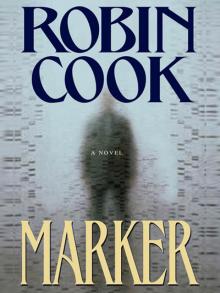 Marker
Marker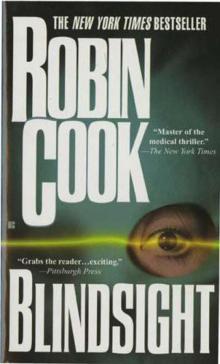 Blindsight
Blindsight Terminal
Terminal Sphinx
Sphinx Fatal Cure
Fatal Cure Host
Host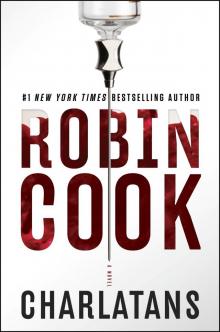 Charlatans
Charlatans Crisis
Crisis Vector
Vector Toxin
Toxin Abduction
Abduction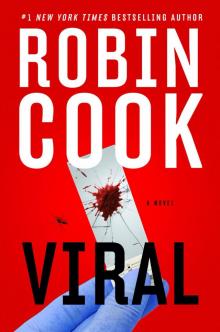 Viral
Viral Pandemic
Pandemic Outbreak
Outbreak Vector js&lm-4
Vector js&lm-4 Godplayer
Godplayer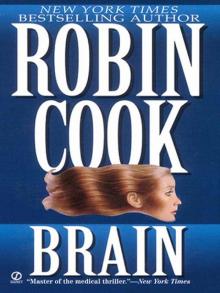 A Brain
A Brain Year of the Intern
Year of the Intern Outbreak dmb-1
Outbreak dmb-1 Cure
Cure Mortal Fear
Mortal Fear The Legend of Parzival
The Legend of Parzival Vital Signs dmb-2
Vital Signs dmb-2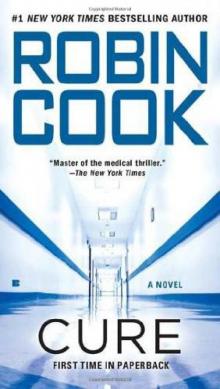 Cure (2010) sam-10
Cure (2010) sam-10 Blindsight sam-1
Blindsight sam-1 The Year of the Intern
The Year of the Intern Intervention sam-9
Intervention sam-9 Foreign Body sam-8
Foreign Body sam-8